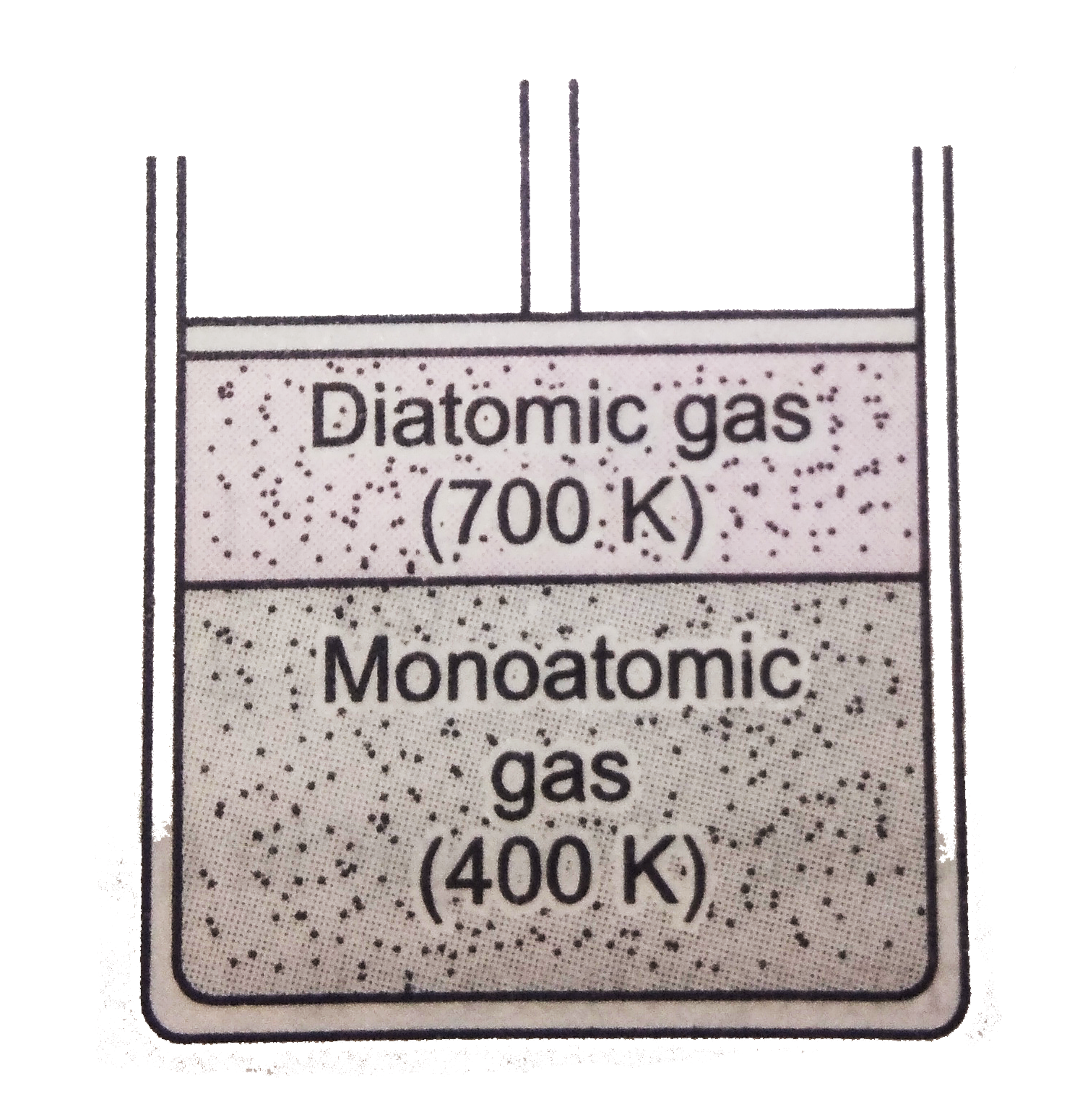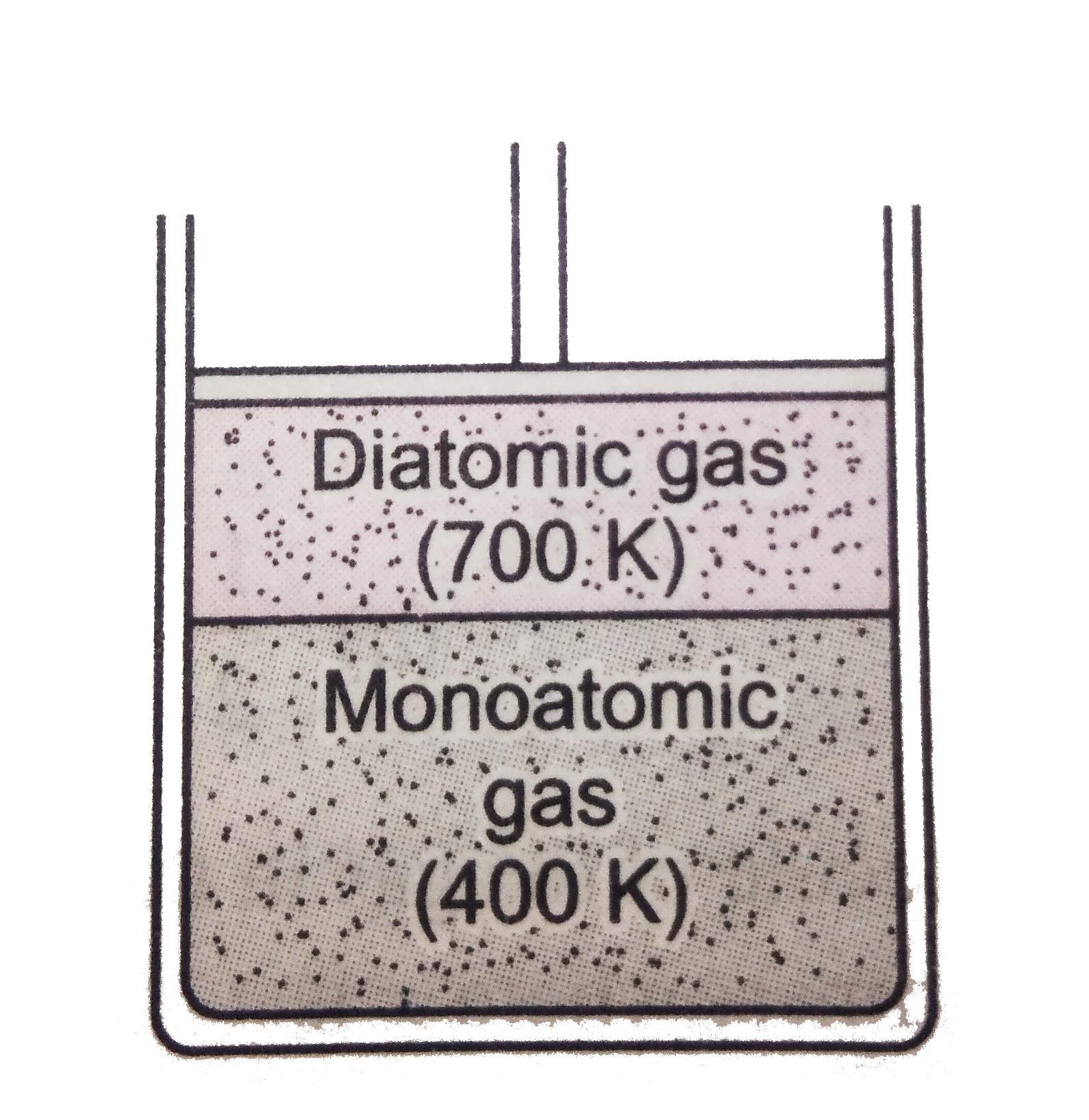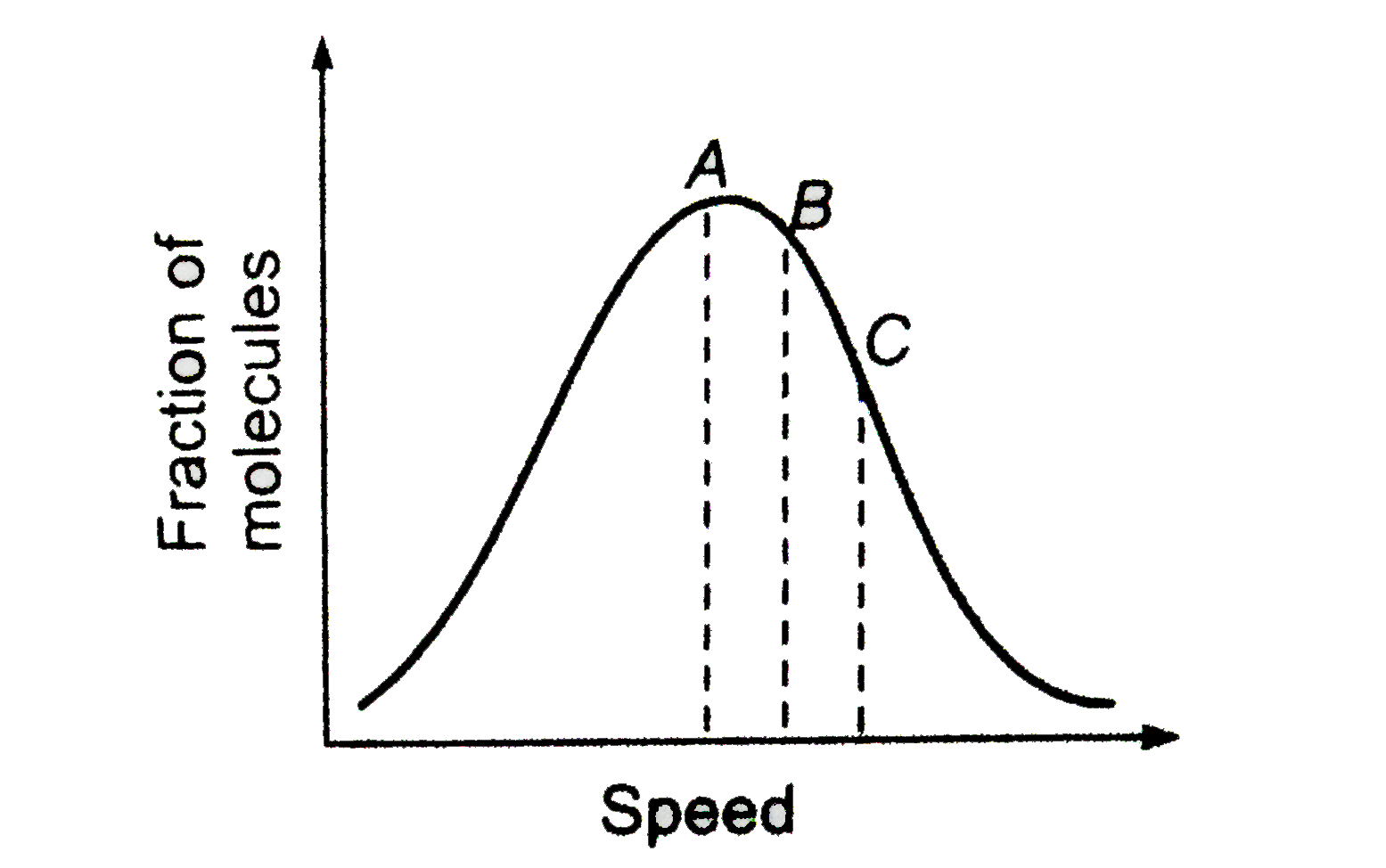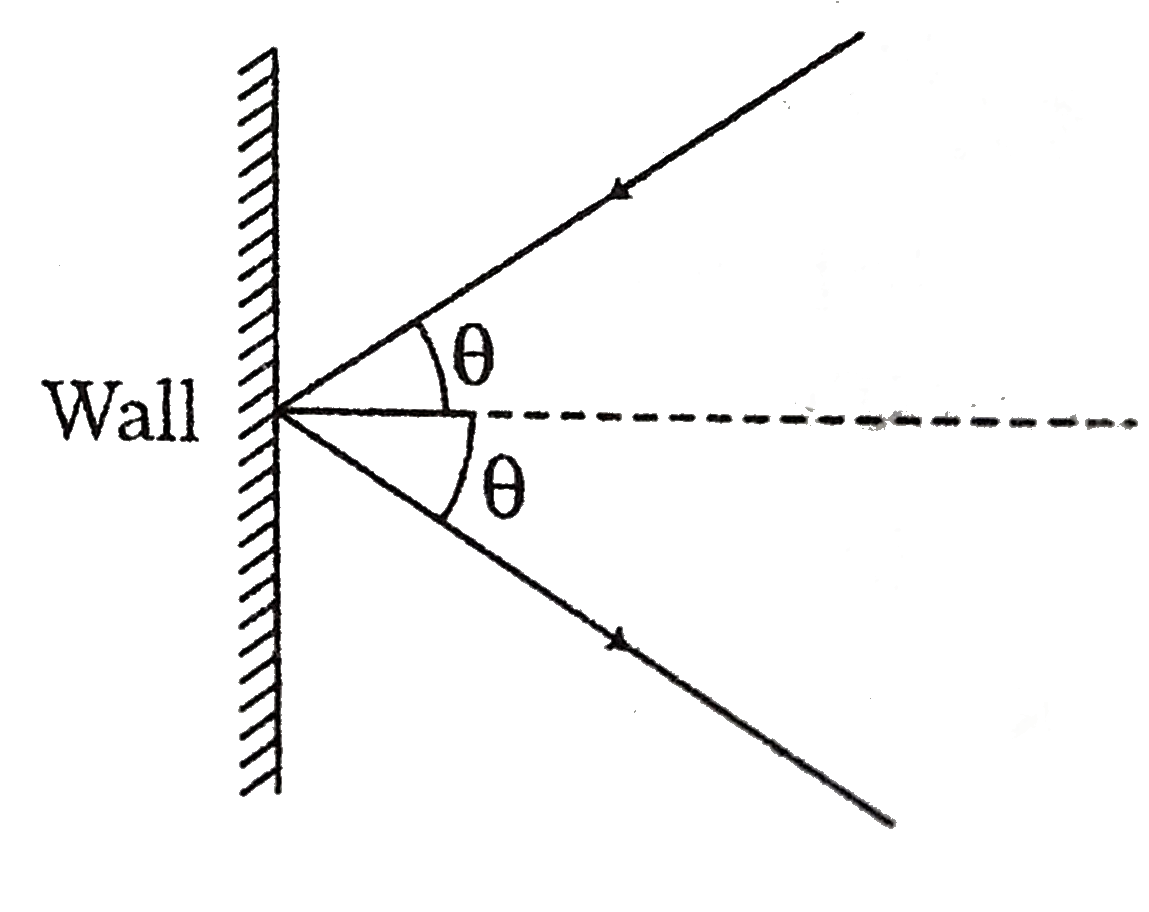Exercise from DHANPAT RAI & CO PHYSICS Chapter 6 Kinetic Theory of gases for Class 11
| Class 11 | PHYSICS |
| Chapter | Kinetic Theory of gases |
| DHANPAT RAI & CO PHYSICS | Exercise |
| Medium | English |
| Academic Year | 2023-2024 |
Question 61
A certain gas possessess 3 degree of freedom corresponding to the translational motion and 2 degrees of freedom corresponding to rotational motion. (i) What is the kinetic energy of translational motion of one such molecule of gas at 300 K ? (ii) If the temperature is raised by 1∘C, what energy must be supplied to the one molecule of the gas. Given Avogadro's number N = 6.023×1023mol−1 and Boltzmann's constant kB=1.38×10−23Jmo−1K−1.View SolutionQuestion 62
A certain gas possessess 3 degree of freedom corresponding to the translational motion and 2 degrees of freedom corresponding to rotational motion. (i) What is the kinetic energy of translational motion of one such molecule of gas at 300 K ? (ii) If the temperature is raised by 1∘C, what energy must be supplied to the one molecule of the gas. Given Avogadro's number N = 6.023×1023mol−1 and Boltzmann's constant kB=1.38×10−23Jmo−1K−1.View SolutionQuestion 100
(a) When a molecule (or an elastic ball) hits a (massive) wall, it rebounds with the same speed. When a ball hits a massive bat held firmly, the same thing happens However, when the bat is moving towards the ball, the ball rebounds with a different speed. Does the ball move faster or slower?
(b) When gas in a cylinder is compressed by pushing in a piston. Its temperature rises. Guess at an explanation of this in terms of kinetic theory using (a) above
(c) What happens when a compressed gas pushes a piston out and expands. What would you observe?
(d) Sachin Tendulkar uses a heavy cricket bat while playing. Does it help him in any way?View SolutionQuestion 101
(a) When a molecule (or an elastic ball) hits a (massive) wall, it rebounds with the same speed. When a ball hits a massive bat held firmly, the same thing happens However, when the bat is moving towards the ball, the ball rebounds with a different speed. Does the ball move faster or slower?
(b) When gas in a cylinder is compressed by pushing in a piston. Its temperature rises. Guess at an explanation of this in terms of kinetic theory using (a) above
(c) What happens when a compressed gas pushes a piston out and expands. What would you observe?
(d) Sachin Tendulkar uses a heavy cricket bat while playing. Does it help him in any way?View SolutionQuestion 103
(a) When a molecule (or an elastic ball) hits a (massive) wall, it rebounds with the same speed. When a ball hits a massive bat held firmly, the same thing happens However, when the bat is moving towards the ball, the ball rebounds with a different speed. Does the ball move faster or slower?
(b) When gas in a cylinder is compressed by pushing in a piston. Its temperature rises. Guess at an explanation of this in terms of kinetic theory using (a) above
(c) What happens when a compressed gas pushes a piston out and expands. What would you observe?
(d) Sachin Tendulkar uses a heavy cricket bat while playing. Does it help him in any way?View SolutionQuestion 104
Two rigid boxes containing different ideal gases are placed on a table. Box A contains one mole of nitrogen at temperature T0, while Box contains one mole of helium at temperature (73)T0. The boxes are then put into thermal contact with each other, and heat flows between them until the gasses reach a common final temperature (ignore the heat capacity of boxes). Then, the final temperature of the gasses, Tf in terms of T0 is View SolutionQuestion 112
A cubical box of side 1 meter contains helium gas (atomic weight 4) at a pressure of 100N/m2. During and observation time of 1 second, an atom travelling with the root-mean-square speed parallel to one of the edges of the cube, was found to make 500 hits with a particular wall, without any collision with other atoms. Take R=253Jmo≤−Kandk=1.38×10−23J/K
(a) Evalute the temperature of the gas.
(b) Evaluate the average kinetic energy per atom.
(c) Evaluate the total mass of helium gas in the box.View SolutionQuestion 113
A cubical box of side 1m contains helium gas (atomic weight 4) at a pressure of 100N/m2. During an observation time of 1second, an atom travelling with the root - mean - square speed parallel to one of the edges of the cube, was found to make 500hits with a particular wall, without any collision with other atoms . Take R=253j/mol−Kandk=1.38×10−23J/K.
(a) Evaluate the temperature of the gas.
(b) Evaluate the average kinetic energy per atom.
( c) Evaluate the total mass of helium gas in the box.View SolutionQuestion 114
A cubical box of side 1 meter contains helium gas (atomic weight 4) at a pressure of 100N/m2. During and observation time of 1 second, an atom travelling with the root-mean-square speed parallel to one of the edges of the cube, was found to make 500 hits with a particular wall, without any collision with other atoms. Take R=253Jmo≤−Kandk=1.38×10−23J/K
(a) Evalute the temperature of the gas.
(b) Evaluate the average kinetic energy per atom.
(c) Evaluate the total mass of helium gas in the box.View SolutionQuestion 117
Two glass bulbs of equal volume are connected by a narrow tube and are filled with a gas at 0∘C and a pressure of 76cm of mercury. One of the bulbs is then placed in melting ice and the other is placed in a water bath maintained at 62∘C. What is the new value of the pressure inside the bulbs? The volume of the connecting tube is negligible.View SolutionQuestion 121
N molecules each of mass m of gas A and 2 N molecules each of mass 2m of gas B are contained in the same vessel which is maintined at a temperature T. The mean square of the velocity of the molecules of B type is denoted by v2 and the mean square of the x-component of the velocity of a tye is denoted by ω2. What is the ratio of ω2/v2=?View SolutionQuestion 125
An oxygen cylinder of volume 30 litres has an initial gauge pressure of 15 atm. And a temperature of 27∘C. After some oxygen is withdrawn from the cylinder, the gauge pressure drops to 11 atm. And its temperature drops to 17∘C. Estimate the mass of oxygen taken out of the cylinder. (R=8.1Jmole−1K−1, molecular mass of O2=32u).View SolutionQuestion 131
Three vessel of equal capacity have gases at the same temperature and pressure. The first vessel contains neon (monoatomic), the second contains chlorine (diatomic), and the third contains uranium hexafluoride (polyatomic). Do the vessels contains equal number of respectice molecules ? Is the root mean square speed of molecules the same in the three cases ? If not, which case is vrms the largest?View SolutionQuestion 132
Three vessel of equal capacity have gases at the same temperature and pressure. The first vessel contains neon (monoatomic), the second contains chlorine (diatomic), and the third contains uranium hexafluoride (polyatomic). Do the vessels contains equal number of respectice molecules ? Is the root mean square speed of molecules the same in the three cases ? If not, which case is vrms the largest?View SolutionQuestion 134
Estimate the mean free path and collision frequency of a nitrogen molecule in a cylinder containing nitrogen at 2 atm and temperature 17∘C. Take the radius of a nitrogen molecule to be roughly 1.0Å. Compare the collision time with the time the molecule moves freely between two successive collisions. (Molecular mass of nitrogen = 28.0 u).View SolutionQuestion 213
Three vessel of equal capacity have gases at the same temperature and pressure. The first vessel contains neon (monoatomic), the second contains chlorine (diatomic), and the third contains uranium hexafluoride (polyatomic). Do the vessels contains equal number of respectice molecules ? Is the root mean square speed of molecules the same in the three cases ? If not, which case is vrms the largest?View SolutionQuestion 277
Which of the following are true for an element ?
(i) Atomic number = number of protons + number of electrons
(ii) Mass number = number of protons + number of neutrons
(iii) Atomic number = number of protons = number of neutrons
(iv) Atomic number = number of protons = number of electronsView SolutionQuestion 278
We know that gases which donot react chemically intermix irrepective of their nature. This is known as diffusion. The law of gravitation does not apply to diffusion which means that lighter gases can more downward while the hevier ones can move upwards.
(i) State Graham's Law of diffusion.
(ii)Give Its mathemartical form.
(iii) What is the value associated with the phenomenon of diffusion of gases? View SolutionQuestion 294
From the following statements, concerning ideal gas at any given temperature T, select the correct one(s)
(1) The coefficient of volume expansion at constant
pressure is same for all ideal gases
(2) In a gaseous mixture, the average translational kinetic
energy of the molecules of each component is same
(3) The mean free path of molecules increases with the
decrease in pressure
(4) The average translational kinetic energy per molecule
of oxygen gas is 3KT (K being Boltzmann constant)View SolutionQuestion 298
Two moles of ideal helium gas are in a rubber balloon at 30∘C. The balloon is fully expandable and can be assumed to require no energy in its expansion. The temperature of the gas in the balloon is slowly changed to 35∘C. The amount of heat required in raising the temperature is nearly (take R
=8.31J/mol.K)View SolutionQuestion 307
Three closed vessels A,B and C are at the same temperature T and contain gases which obey the Maxwellian distribution of velocities. Vessel A contains only O2,B only N2 and C a mixture of equal quantities of O2 and N2. If the average speed of the O2 molecules in vessel A is V1, that of the N2 molecules in vessel B is V2, the average speed of the O2 molecules in vessel C is (where M is the mass of an oxygen molecules)View SolutionQuestion 310
A gas is enclosed in a cylinder with a movable frictionless piston. Its initial thermodynamic state at pressure Pi=105 Pa and volume Vi=10−3m3 changes to a final state at Pf=(1/32)×105PaandVf=8×10−3m3 in an adiabatic quasi-static process, such that P3V3=constant. Consider another thermodynamic process that brings the system form the same initial state to the same final state in two steps: an isobaric expansion at Pi followed by an isochoric (isovolumetric ) process at volume Vr. The amount of heat supplied to the system i the two-step process is approximatelyView SolutionQuestion 311
In Fig., a container is shown to have a movable (without friction) piston on top. The container and the piston are all made of perfectly insulating material allowing no heat transfer between outside and inside the container. The container is divided into two compartments by a rigid partition made of a thermally conducting material that allows slow transfer of heat. the lower compartment of the container is filled with 2 moles of an ideal monoatomic gas at 700 K and the upper compartment is filled with 2 moles of an ideal diatomic gas at 400 K. the heat capacities per mole of an ideal monoatomic gas are Cυ=32RandCP=52R, and those for an ideal diatomic gas are Cυe=52RandCP=72R.
Consider the partition to be rigidly fixed so that it does not move. when equilibrium is achieved, the final temperature of the gases will be
 View Solution
View SolutionQuestion 312
In Fig., a container is shown to have a movable (without friction) piston on top. The container and the piston are all made of perfectly insulating material allowing no heat transfer between outside and inside the container. The container is divided into two compartments by a rigid partition made of a thermally conducting material that allows slow transfer of heat. the lower compartment of the container is filled with 2 moles of an ideal monoatomic gas at 700 K and the upper compartment is filled with 2 moles of an ideal diatomic gas at 400 K. the heat capacities per mole of an ideal monoatomic gas are Cυ=32RandCP=52R, and those for an ideal diatomic gas are Cυe=52RandCP=72R.
Now consider the partition to be free to move without friction so that the pressure of gases in both compartments is the same. the total work done by the gases till the time they achieve equilibrium will be
 View Solution
View SolutionQuestion 314
An insulated container of gas has two chambers separated by an insulating partition. One of the chambers has volume V1 and contains ideal gas at pressure P1 and temperature T1.The other chamber has volume V2 and contains ideal gas at pressure P2 and temperature T2. If the partition is removed without doing any work on the gas, the final equilibrium temperature of the gas in the container will be View SolutionQuestion 323
Two rigid boxes containing different ideal gases are placed on a table. Box A contains one mole of nitrogen at temperature T0, while Box contains one mole of helium at temperature (73)T0. The boxes are then put into thermal contact with each other, and heat flows between them until the gasses reach a common final temperature (ignore the heat capacity of boxes). Then, the final temperature of the gasses, Tf in terms of T0 is View SolutionQuestion 327
Consider a spherical shell of radius R at temperature T. The black body radiation inside it can be considered as an ideal gas of photons with internal energy per unit volume u=UV∝T4 and pressure P=13(UV). If the shell now undergoes an adiabatic expansion the relation between T and R is :View SolutionQuestion 367
Three containes of the same volume contain three different gases. The masses of the molecules are m1,m2 and m3 and the number of molecules in their respective containers are N1,N2 and N3. The gas pressure in the containers are P1,P2 and P3 respectively. All the gases are now mixed and put in one of the containers. The pressure P of mixture will beView Solution


